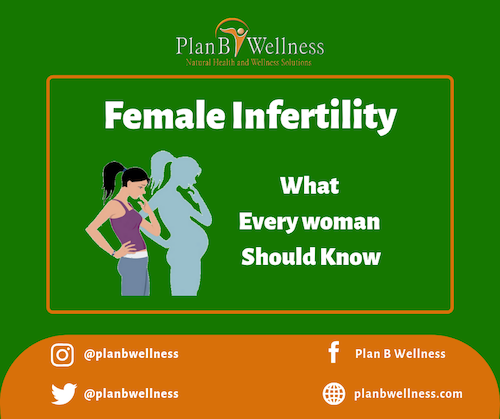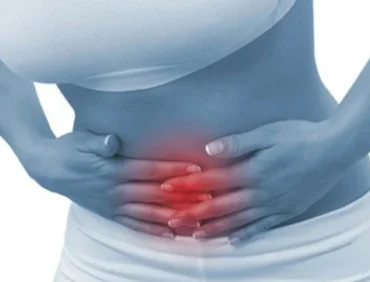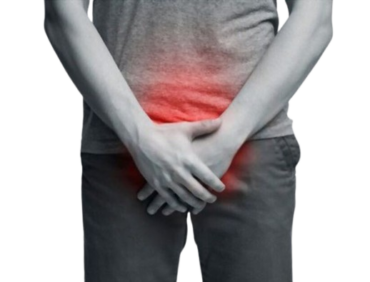Female infertility refers to infertility in female humans.
Infertility is caused by many things, including nutrition, diseases, and other malformations of the uterus.
Female infertility affects women from around the world, and the cultural and social stigma surrounding it varies from one place to another.
Of course, the stigma against women suffering from infertility is much more in Africa than any where else in the world.
Types of Female Infertility
Infertility can further be broken down into primary and secondary infertility and they are both explained as follows;
Primary infertility: This refers to the inability to give birth either because of not being able to become pregnant, or carry a child to live birth, which may include miscarriage or a stillborn child.
Secondary infertility: This refers to the inability to conceive or give birth when there has been a previous pregnancy or live birth.
Causes of Female Infertility
Causes (or factors) of female infertility can basically be classified regarding whether they are acquired, genetic, or based on location.
Acquired Factors
They include age, tobacco smoking, alcohol use, drug abuse, body weight and eating disorders, sexually transmitted infections, chemotherapy, immune infertility, liver and kidney diseases, adhesions, celiac diseases, diabetes, radiation from radiation therapy, e.t.c.
Genetic Factors
They usually arise due to genetic defects and mutation. An example of chromosomal defect is Turner Syndrome. Some of these gene or chromosome abnormalities cause intersex conditions, such as androgen insensitivity syndrome.
Location Factors
These include:
Hypothalamic-pituitary factors such as Hypothalamic dysfunction and Hyperprolactinemia.
Vaginal factors such as Vaginismus and Vaginal obstruction.
Ovarian factors arising from Chemotherapy, Polycystic ovarian syndrome (PCOS), Anovulation, Premenopause, Menopause, Ovarian cancer, Ovarian Cyst, etc.
Tubal (ectopic)/peritoneal factors arising from previous ectopic pregnancy, pelvic adhesions, Tubal occlusion, Tubal Blockage, Tubal dysfunction, Pelvic Inflammatory Disease (PID), Endometriosis amongst others.
Cervical factors such as Cervical stenosis, Antisperm antibodies, Non-receptive cervical mucus.
Uterine factors such as Implantation failure, Asherman’s Syndrome, Uterine malformations and Uterine fibroids.
Diagnosis and Treatment of Female Infertility
Diagnosis of infertility begins with a medical history and physical examination, usually followed by lab test, examination and imaging such as pelvic scan, pap smear, laparoscopy, fertiloscopy to determine underlying cause(s) of infertility.
Treatments for female infertility can either attempt to restore fertility through medication, surgery, alternative therapy or through sophisticated medical techniques.
Natural fertility restoration involves stimulating ovulation with natural fertility drugs like the ones here to trigger ovulation and to also stimulate a better egg or an extra egg or eggs in ovulating women.
Fertility drugs generally work like the natural hormones: follicle-stimulating hormone (FSH) and luteinizing hormone (LH).
As far as female infertility is concerned, here are five things every lady should watch out for:
- Pain during sex
- Changes in sexual desire
- Irregular periods or No periods
- Painful or heavy periods
- Symptoms of hormone fluctuations
Four Ways To Prevent Female Infertility
Egg freezing: A woman can freeze her eggs to preserve her fertility. By using egg freezing while in the peak reproductive years, a woman’s oocytes (eggs) are cryogenically frozen and ready for her use later in life, reducing her chances of female infertility.
Early Parenthood: Fertility does not ultimately cease before menopause, but it starts declining after age 27 and drops at a somewhat greater rate after age 35.
Women whose biological mothers had unusual or abnormal issues related to conceiving may be at particular risk for some conditions, such as premature menopause, that can be mitigated by not delaying parenthood.
Preventing and Treating existing diseases: Identifying and controlling chronic diseases such as diabetes and hypothyroidism increases fertility prospects.
Lifelong practice of safer sex reduces the likelihood that sexually transmitted diseases will impair fertility; obtaining prompt treatment for sexually transmitted diseases (STDs) reduces the likelihood that such infections will do significant damage.
Regular physical examinations (including pap smears) help detect early signs of infections or abnormalities.
Maintaining a healthy lifestyle: Excessive exercise, consumption of caffeine, alcohol and smoking have all been associated with decreased fertility. Eating a well-balanced, nutritious diet, with plenty of fresh fruits and vegetables, and maintaining a normal weight, on the other hand, have been associated with better fertility prospects.
Diet To Boost Female Fertility
Oysters: Oysters have been known to increase libido, but oysters can also improve female fertility because they are packed with zinc, which increases the production of good-quality eggs.
Beans: Beans are a lean protein and are full of iron, which helps to increase fertility and libido. Low iron levels can result in anovulation, which is when ovulation does not produce a healthy egg.
Berries: Any kind of berries are good at protecting eggs from damage and aging because they are full of antioxidants. Strawberries have been linked to naturally increasing a woman’s libido.
Figs: Figs have been believed to increase fertility since the time of Ancient Greeks, and now we have scientific evidence. Figs contain a lot of iron, which are important for healthy eggs and ovulation.
Leafy Greens: Dark leafy greens such as spinach, romaine, arugula, and broccoli are high in folate, a B vitamin that has been shown to improve ovulation. Leafy greens also naturally increase a woman’s libido.
Salmon and other fatty fish: Salmon is full of Omega-3 Fatty Acids which are proven to regulate blood flow to the reproductive organs
With this write-up, we believe you now understand the causes of female infertility as well as the risk factors and how not to only avoid them but overcome female infertility in general.
If you will like us to handle your particular infertility case naturally with a very high rate of success, do not hesitate to contact us using our contact details below.
If you have any question concerning your fertility as a woman, feel free to ask using the comment box below and one of our in-house experts will respond to you with clarification.
Do not forget to share this with others that will benefit from reading it.
Stay healthy and never give up!
Plan B Wellness
Tel/SMS/WhatsApp: +2348099666650
Email: consult@planbwellness.com
Twitter/Instagram: @planbwellness












[…] Diet That Boost Female Fertility…read more on https://www.planbwellness.com/female-infertility-what-you-should-know/ […]
[…] disorders, including pelvic inflammatory disease (PID), premenstrual syndrome, and […]
[…] a woman can potentially get pregnant but this would increase the risk of a tubal pregnancy, or ectopic pregnancy (a pregnancy in which the fertilized egg implants outside the […]
[…] blockage is a common factor in female fertility. Hearing that you have blocked fallopian tubes can feel scary. What does it mean? where would you […]
[…] menstrual disharmonies, such as painful periods, endometriosis, dysfunctional uterine bleeding and infertility can be avoided and healed by taking better care of this inner palace – […]
[…] scar tissues are not easily detectable until maybe it leads to infertility issues. However, by following these suggestions and paying attention to your body, you can have some […]